Index

Review: Factory overclock and special cooling
Today we’ll take a closer look at Club 3D HD 7970 XT2 ‘13Series. Many will probably recall that the ‘13Series has been around for a while, but don’t forget the XT2 suffix, which denotes a GHz version of the Tahiti chip.
Club 3D came up with two sub-brands for the HD 7970 series. One is dubbed White Label and it includes the ‘13Series, while the other one is Black Label, which includes PokerSeries cards. Poker, bourbon and GPUs – what could possibly go wrong?
These cards come with some accessories and AMD’s Never Settle Game bundle out of the box. On the other side the ‘13Series is supported by an aggressive price tag and it is mainly targeted at e-tailers who get the game vouchers directly from AMD or system integrators. These cards come without game bundles and any accessories.
The new HD 7970 ‘13Series features Club 3D's CoolStream dual-slot cooler with two fans and three heatpipes that promises lower temperatures and lower noise when compared to the reference HD 7970 graphics card.
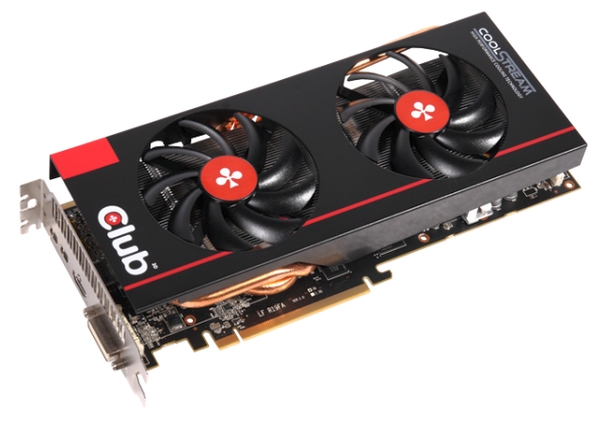
We saw the exact same CoolStream cooler on previous PokerSeries cards. All PokerSeries have two DVIs, while the ‘13Series has just one, but both series have an additional HDMI port and two DisplayPort outs.
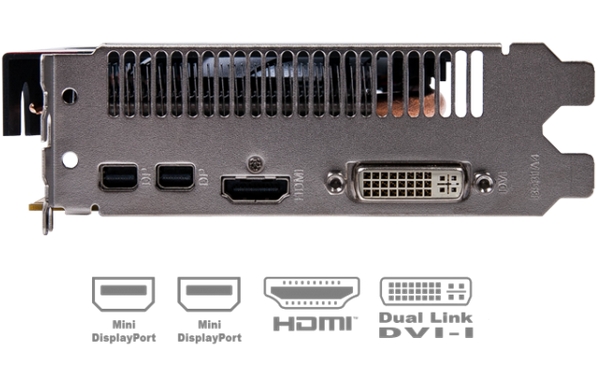
Since most monitors today ship with DVI and HDMI connectors, setting up a dual-monitor rig shouldn’t be a problem. However, if both monitors are DVI-only, a dongle will have to be used. Unfortunately an HDMI to DVI dongle is rarely included in the bundle and this is the case with the ’13Series. Club 3D tried to save a few bucks by going for a small bundle, and that means it doesn’t come with any bells and whistles. The driver disc is the only bundled thing you’ll get.
The plain HD 7970 ‘13Series without the XT2 suffix runs at reference HD 7970 operating clocks. A quick reminder, the HD 7970 works at 925MHz base and 975MHz Boost clocks, with 3GB of GDDR5 memory paired up with a 384-bit memory bus, clocked at 5500MHz.
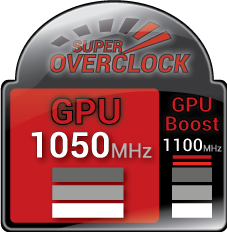
The new HD 7970 XT2 ‘13Series is factory overclocked. It uses a GHz Edition Tahiti chip, which is faster than the plain Tahiti, but it’s overclocked on top of that. The base clock was upped from 1000MHz to 1050MHz, while the Boost clock was also increased by 50MHz and it stands at 1100MHz.
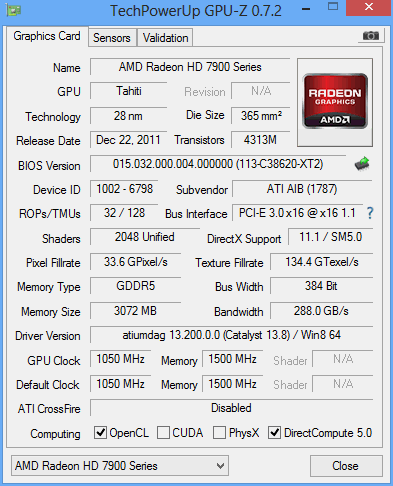
Club 3D’s packaging is minimalistic and white, which should underscore the difference between ’13Series and PokerSeries products which ship in black boxes.
In the box you’ll find:
Club 3D Radeon HD 7970 XT2 '13Series graphics card
Driver & E-Manual CD
Quick install guide
We already had a chance to see the CoolStream cooler when we tested Club 3D’s HD 7970 GHz RoyalAce Edition. It impressed us and it’s still as good as ever.
Unlike reference cooling, where the fan is located towards the end of the card and blows air through the card, Club 3D opted for two fans that push air downwards, straight at the heatsink. As a result, some of the heat may be released inside the case so you might want to make sure your in-case airflow is adequate.
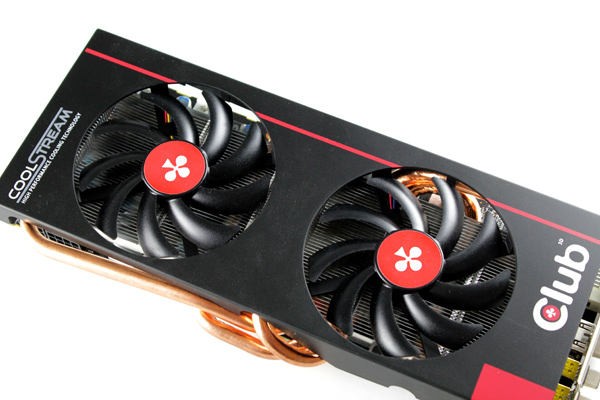
The cooler is held in place with four screws only, but we didn’t notice any instability or vibration.

When the cooler is removed you can see where the GPU touches the base, and you can see that the HD 7970’s GPU is rotated by 45 degrees. The company used 8mm thick heatpipes that transfer heat to the farthest parts of the heatsink with ease. Three heatpipes go through the cooler base but Club 3D made sure they’re bent in a way so as to provide five contact points with the heatsink.


Both fans are connected to the same 4-pin power connector and the RPM can be regulated in Catalyst Control Centre.


The I/O panel of the HD 7970 XT2 ‘13Series cards lacks one DVI port, but it features more vents than the PokerSeries. In our real world tests we could see no effect on cooler performance, as the cooler is open anyway and the heat from the heatsink is dispersed all over the place.

Club 3D HD 7970 XT2 ‘13Series graphics card is special for its dual slot cooler, which is based on CoolStream technology. Due to the tall heatpipes and the way they’re bent, the cooler is a few centimeters taller than standard coolers. To be precise, the card size is 268 x 128 x 40mm.
Still, although it exceeds the height of the standard graphics card, even the most traditional cases shouldn’t have problems fitting it inside. You can get a better idea of how tall they are when the card is viewed from the back.
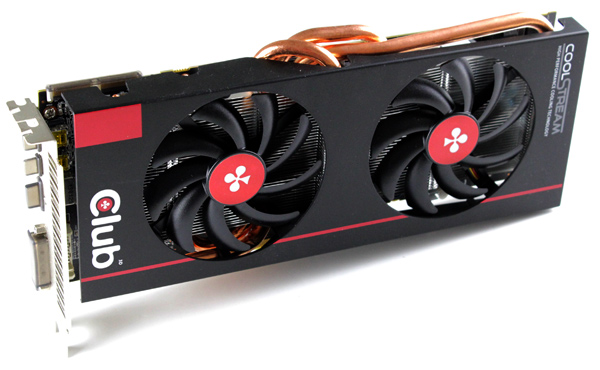
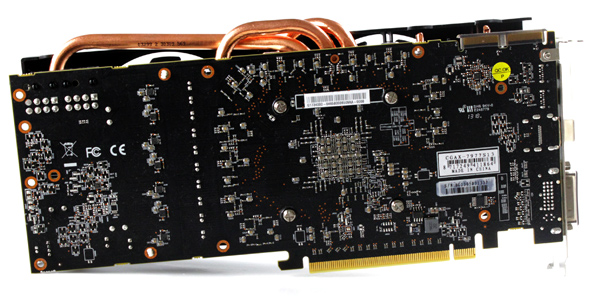
The card has 3GB of Hynix memory, which we’ve grown accustomed to seeing on pretty much all AMD and Nvidia cards launched last year. The memory is rated at 1500MHz. The back does not feature any memory modules and the ones on the front are cooled passively. Memory doesn’t require much in the way of cooling, except you’re interested in extreme overclocking.
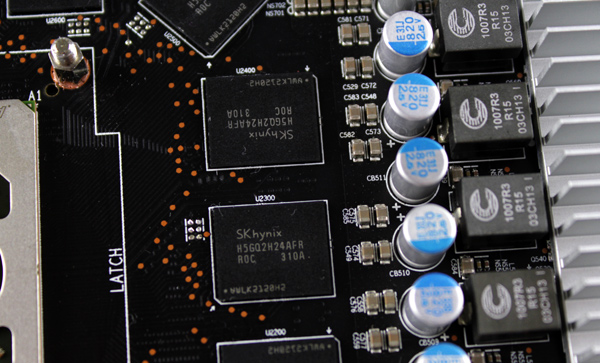
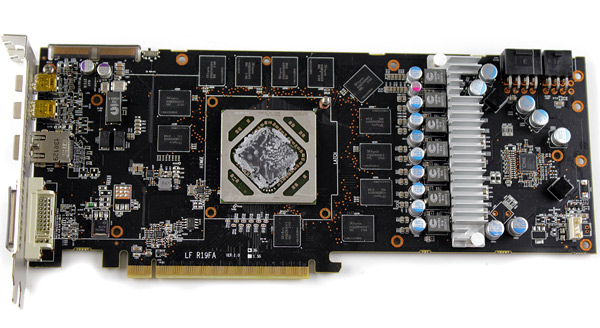
The I/O panel has one dual-link DVI, standard HDMI out and two mini DisplayPort outs. PokerSeries cards have two dual-link DVIs, which is practically the only big hardware difference between the two series.
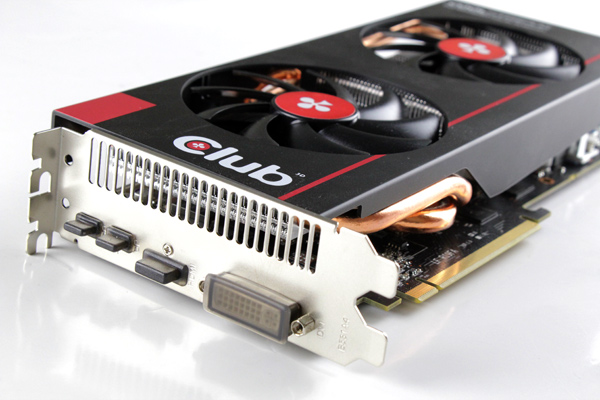
All HD 7970 cards require at least one 6-pin and one 8-pin power connector. The TDP of the card is 300W.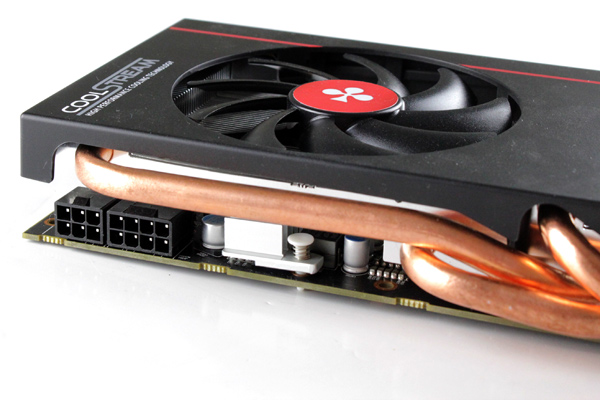
The Club 3D HD 7970 XT2 ‘13Series comes with two CrossFire connectors, meaning that it’s possible to daisy chain up to four cards for some fierce CrossFireX muscle. Although the shroud hides the CrossFire connectors, it will not be a problem as CrossFire bridge connectors are flexible.
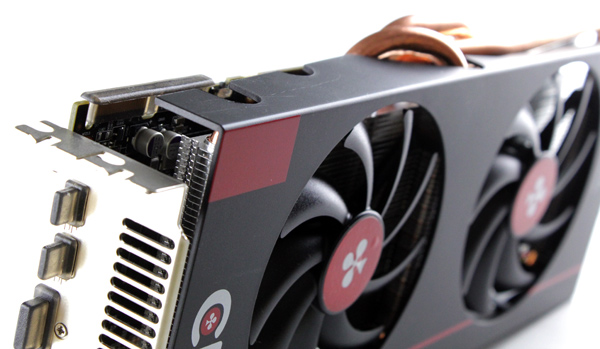
The card also sports a toggle switch. This switch allows you to switch between two separate BIOS versions, 2) factory defaults and 1) unprotected.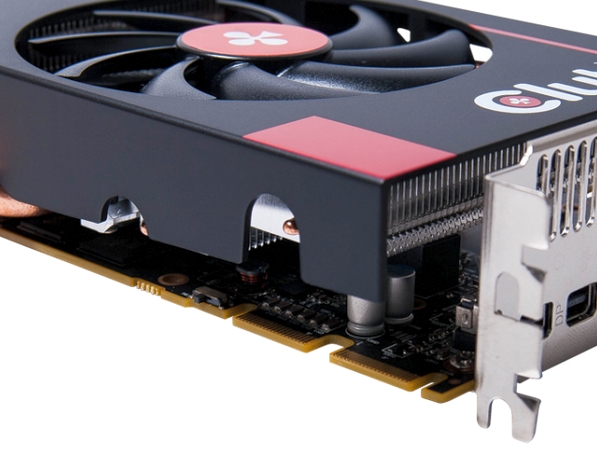
Testbed:
- Motherboard: EVGA Z77 FTW
- CPU: Ivy Bridge Core i7 3770 (4.5GHz)
- CPU Cooler: Gelid The Black Edition
- Memory: 8GB Corsair DDR3 2400MHz
- Harddisk: Corsair Neutron GTX 240GB
- Power Supply: CoolerMaster Silent Pro 1000W
- Case: CoolerMaster Cosmos II Ultra Tower
- Operating System: Win8 64-bit
Drivers:
- Nvidia 326.41 Beta
- AMD 13.8_Beta
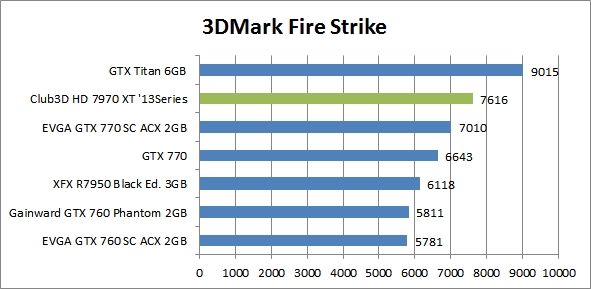

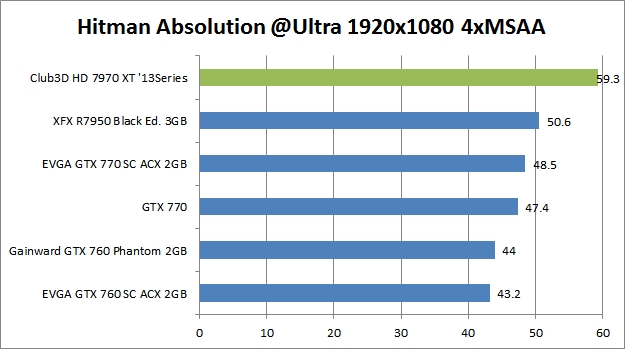
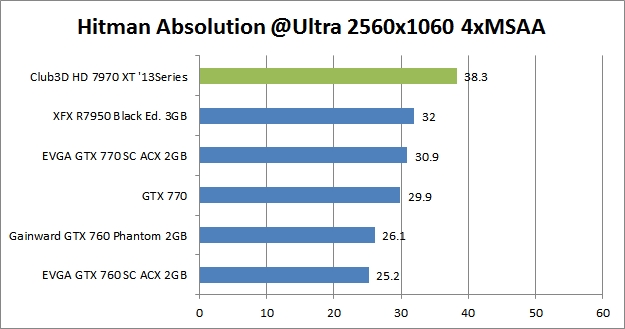
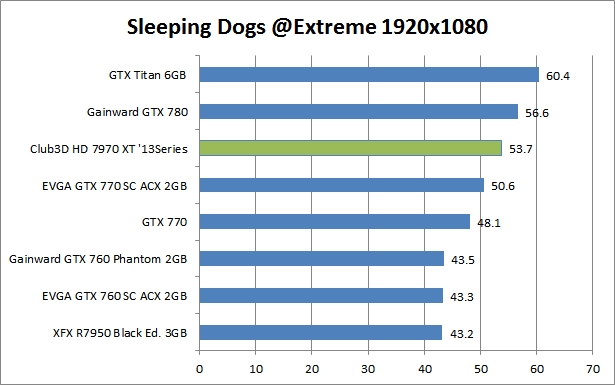
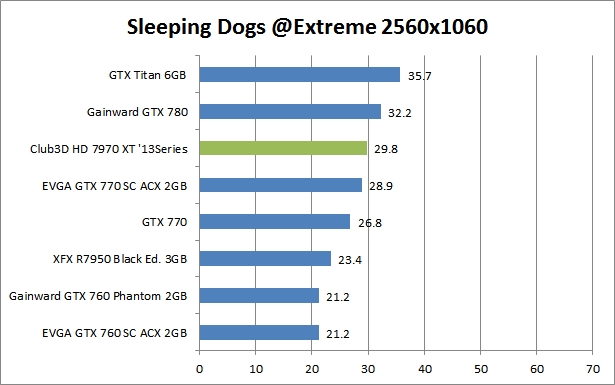
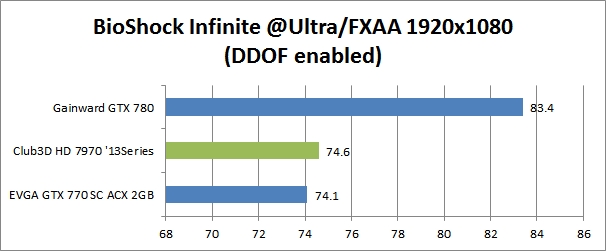
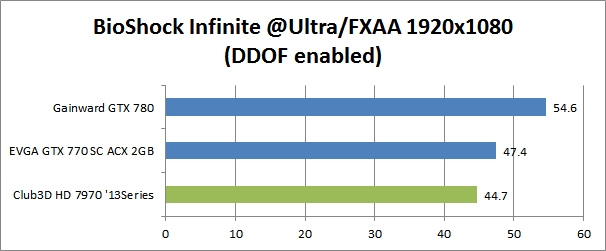
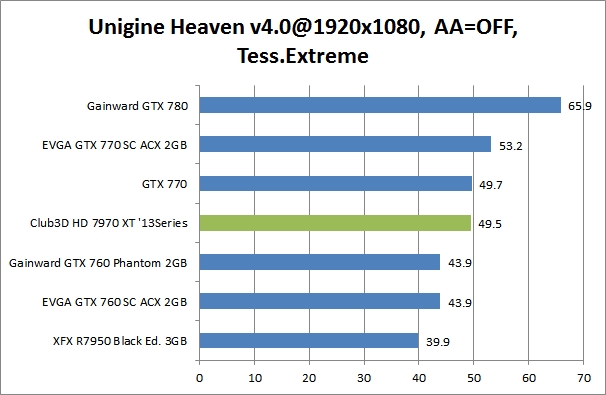
Quite a few enthusiasts use some sort of tool to control their graphics card. There are hundreds of monitoring tools out there, but only a handful provide complete control and interaction with the card. Club3D’s main goal with the royalFlush was to provide users with more overclockability, allowing them to unlock even more performance and tweak the setting to boost efficiency.
The basic features include monitoring or adjusting the core and memory clocks, temperature, fan speed and voltage. Users can save five custom profiles, which can include different values for core voltage, core clock, memory clock and fan speed. The UI is intuitive and simple. The start window consists of the Main Window and Hardware Monitor.
The latest version of royalFlush supports dual-GPU overclocking. When you have two different GPUs, you can select the one you would like to adjust and then tweak the core voltage, core speed, memory speed, and fan speed. From the general page of setting, you can also select the “Synchronization” to synchronize the two different graphic cards settings of core speed, memory speed, and fan speed.
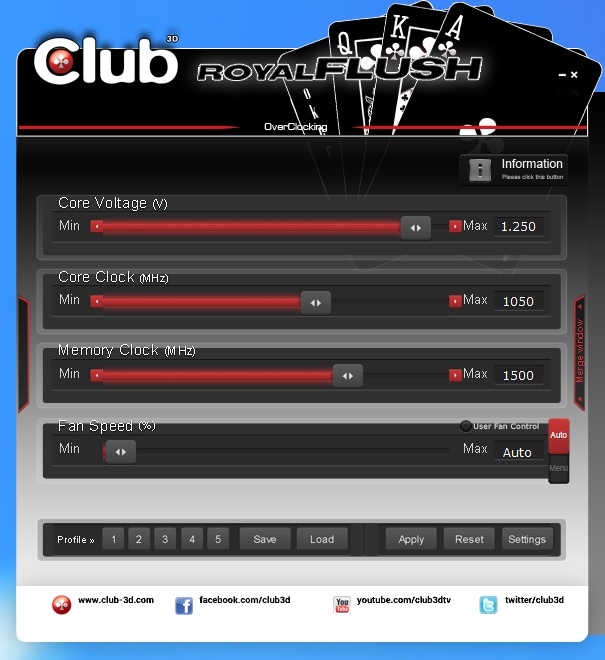
Our HD 7970 XT2 ‘13Series sample was quite overclockable. We upped the GPU base clock from 1050MHz to 1160MHz. Overclocking the core by an additional 110MHz was a pretty nice result, since the card already runs 50MHz faster than the reference 1GHz. After our overclock, the GPU Boost did not come into play. We squeezed out another 100MHz from the memory (400MHz effectively).
We had no need for manual RPM settings, not even after overclocking, because auto-regulation ran just fine and temperature never exceeded 78°C.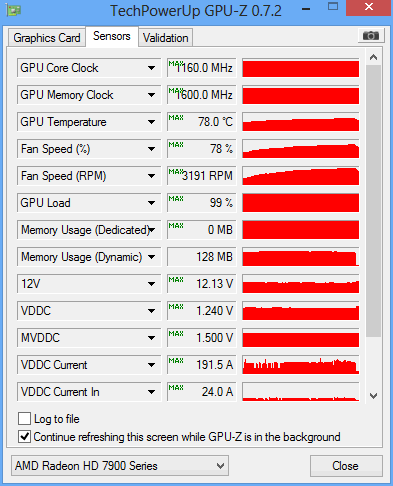
Thanks to CoolStream technology, which involves a large heatsink, two fans and specially bent heatpipes, Club3D’s solution outperforms the reference one, even with a factory overclocked GPU.
Adjusting the fan speed manually is a breeze. To adjust the fan speed in royalFlush, all you have to do is click the "Manual" button on the right of the "Fan Speed" line.
When idle, the GPU was around 34°C and the fans were quiet.

After longer gaming sessions, temperatures climbed up to 77°C. When the card got hot the fans are loud (they ran at about 300RPM), but they were still music to our ears compared to the rather very loud reference cooler.
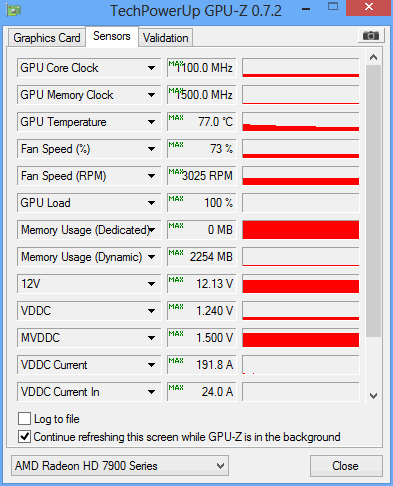
AMD HD 7970 GHz Edition graphics card can draw significantly more power than originally launched HD 7970 cards, which run at 925MHz. Compared with the GTX 770, this particular card can draw up to 50 watts more juice.
Club 3D launched two cards in its HD 7970 ‘13Series and if you’re after the faster one, the XT2 is your choice. The XT2 sports AMD’s GHz Edition Tahiti chip clocked at 1000MHz, but the card is factory overclocked to 1050MHz and the Boost clock is 1100MHz out of the box.
Both cards, as well as the cards from Club 3D’s PokerSeries are special for their dual-fan CoolStream coolers, which performed well in our tests. Club 3D produced an ace from its sleeve when it decided to strap the HD 7970 with special cooling, especially in the case of its overclocked HD 7970 royalAce/royalKing and XT2 ‘13Series cards. The cooler is much quieter than the reference cooler used on AMD HD 7970 GHz Edition cards.
AMD’s HD 7970 GHz Edition were originally designed to counter Nvidia’s GTX 680 cards, which were superseded by the GTX 770. The newer GTX 770 offers better performance per watt and its reference cooler is much quieter than AMD’s reference solution. Luckily the ’13Series features a CoolStream cooler and thanks to the 50MHz overclock it beats the GTX 770 in most games.
However, we should note that XT2 ‘13Series do not necessarily include a Never Settle voucher. The ‘13Series is supported by an aggressive price tag and it is mainly targeted at e-tailers who get the game vouchers directly from AMD or those who do system integration. Normally the price of '13 Series cards should be around 15 dollars / euro cheaper than PokerSeries cards. Because of recent price fluctuations and AMD’s sales program there is now a possibility that new stock will be offered at an even more aggressive price point. The card is currently listed for 335 euro and its price is constantly falling. It’s not exactly a bargain and we suggest you check whether your e-tailer/retailer offers the game bundle voucher before you pull the trigger.
In conclusion, the Club 3D HD 7970 XT2 ‘13Series is definitely a card that no gamer wouldn’t say no to. We are still looking at one of the fastest single GPU graphics cards on the market, with a factory overclock, special cooling and further overclocking headroom. However, although it is supposed to be cheaper than its siblings, some older GHz Edition cards are already selling for a bit less.
With a new generation just around the corner, prices will undoubtedly keep tumbling, so keep an eye out for some Tahiti bargains over the next few weeks.
